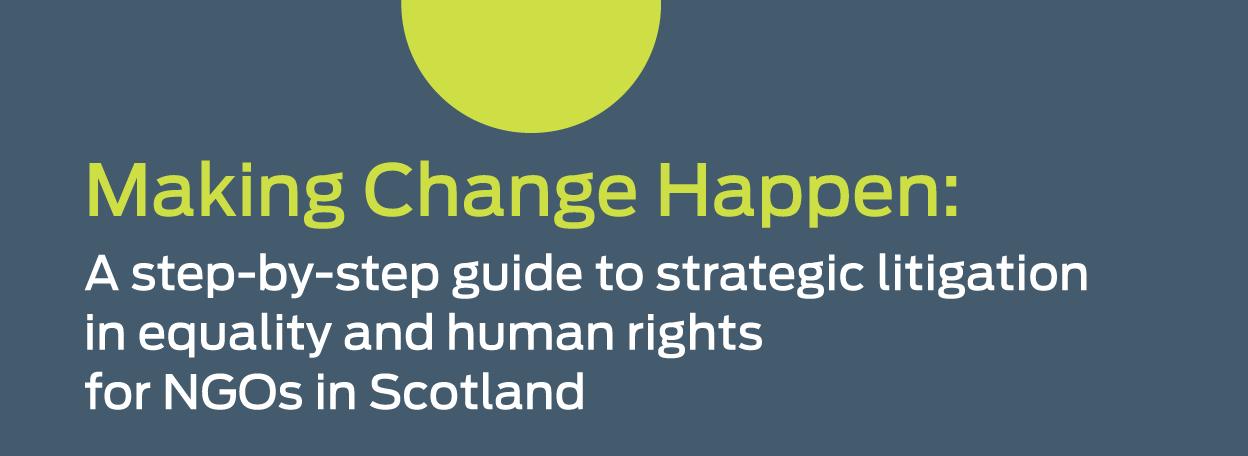Step four: Consider the method of strategic litigation
The main ways that an organisation can be directly involved in using litigation to get strategic change are:
- Support individuals who are taking tribunal proceedings, judicial review, a case to the European Court of Human Rights or other civil law cases that raise strategic issues, and communicate these widely to get strategic change;
- Take a judicial review themselves if they are recognised by the court;
- Use their expertise and knowledge for a Public Interest Intervention in an ongoing case.
There are other ways too of using the law to get change that do not involve litigation in court.
For example:
For example:
- Consider getting a legal opinion on a particular issue.
- Consider how to support an individual or a group to make an official complaint about poor service.
To determine the best method of strategic litigation, you could consider:
- Individual with case - Do you know of individual(s) who would be willing and for whom it would be appropriate to pursue legal proceedings on strategic issues, with support? Would your organisation or partner organisations come into contact with those who may have a potential case that raises the strategic issue? There is more information around considering the impact on individuals here.
- Partners - Could you bring together organisations working in the strategic area to identify which organisation is best placed to take forward the litigation and how you could work together? Do you have specific expertise on this issue, or would it be better for another organisation to intervene or pursue legal action?
- Supporting individuals - What experience do you have of supporting individuals involved in legal action, or do you have good contacts with other organisations who can advise you on how best to support an individual?
- Individual or organisational case - Are there particular reasons why it would be difficult for an individual to take a case on this issue, and therefore it would be better to consider litigation in an organisation’s name?
- Ongoing cases - Do you know of an ongoing case which raises the strategic issue, in which you could intervene to add value to the court’s deliberations?
- Legal contacts - Are you connected in with legal networks or have good contacts with legal professionals to be informed of relevant cases arising? Or if not, what steps could you take to improve these connections?

